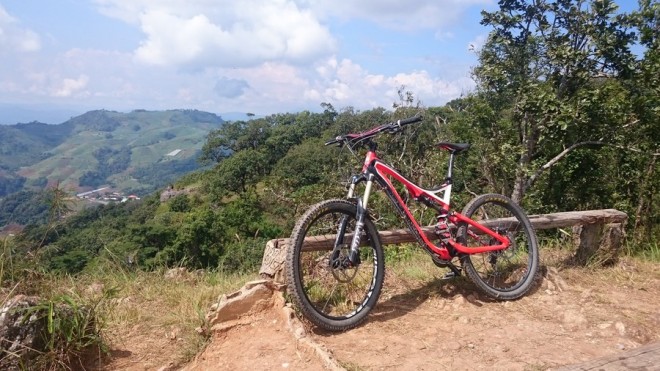Every mountain biker understands that line choice is essential to riding smoothly. The difference of a good line and bad line determines whether you can maintain speed in the best case. In the worst case, it determines whether you get through a section or whether you slow down, stop, or even crash. This is why every basic mountain biking tutorial stresses the importance of looking ahead and scanning the terrain.
As with most things, this is easier said than done. It requires plenty of practice. Line choice is not much of an issue on even terrain or at low speed. It becomes important when you go fast and it becomes much more challenging when you ride trails with many obstacles. High speed and gnarly trails in combination present a challenge even to expert riders.
So, what exactly goes on when you pick a line? You look at the trail ahead and you are presented with choices. The farther you look ahead, the more information you have to process, but on the positive side, more information allows you to make better decisions. Let’s look at an example to illustrate this.
Say you are going down a hill on a rutted trail and you scan ahead 10 metres. There’s a rut running on left, so you decide to stay on the right side. Then you look 20 metres ahead instead of ten. You realise the trail makes a right turn and that the rut deepens further down, so you will be cut off from the berm on the left rim of the turn.
Staying on the right, you won’t be able to pass through the curve while maintaining speed. You will have to brake and ride the early apex line which is slow. With farther range scanning, you decide to hop over the rut early and take the berm line which is fast. The rut on the left is the lesser evil in this case.
Now, let’s look at what is going on in your mind, when picking a line. In plain language, there is A (a good line) and B (not a good line). Logically speaking, A is not B and therefore by choosing A you will avoid B. One might conclude that by avoiding B, one would end up riding an A line. Unfortunately, this is not the case.
In reality, these are two different modes of thinking that yield very different results. If you think A, you make an acceptance decision. Chances are that you clear the section smoothly. If you think not-B, you make an avoidance decision. This means you have to change course and reevaluate. The reevaluation costs you time, therefore you have to slow down. Even worse, it might be followed by yet another avoidance decision.
The not-B thinking mode leads to choppy riding, accompanied by line switching and unnecessary braking. What is more, by looking at obstacles for too long, the bike might just follow the line of vision and run straight into them, since steering always follows the line of vision. The A thinking mode leads to fluent riding, less corrections, and reduced braking. When you commit to a line, no further time is wasted with evaluation.
It’s quite important to develop an awareness for these two different states when riding. Whenever you notice that avoidance decisions outnumber acceptance decisions, you have reached a critical point where the trail works you instead of you working the trail. It happened to me often enough, and I found there is only one way to deal with it.
You have to stop, and sort of force a mental reset. It’s like flipping a switch. The mantra is: “I see a line. There’s nothing but a line.” So, the solution for getting out of the avoidance mode that bumps you around the trail is to move the focus away from obstacles towards non-obstacles, or rather small obstacles you are willing to take on. It sounds very simple and straightforward, but applying it in practice is a different story.

























You must be logged in to post a comment.